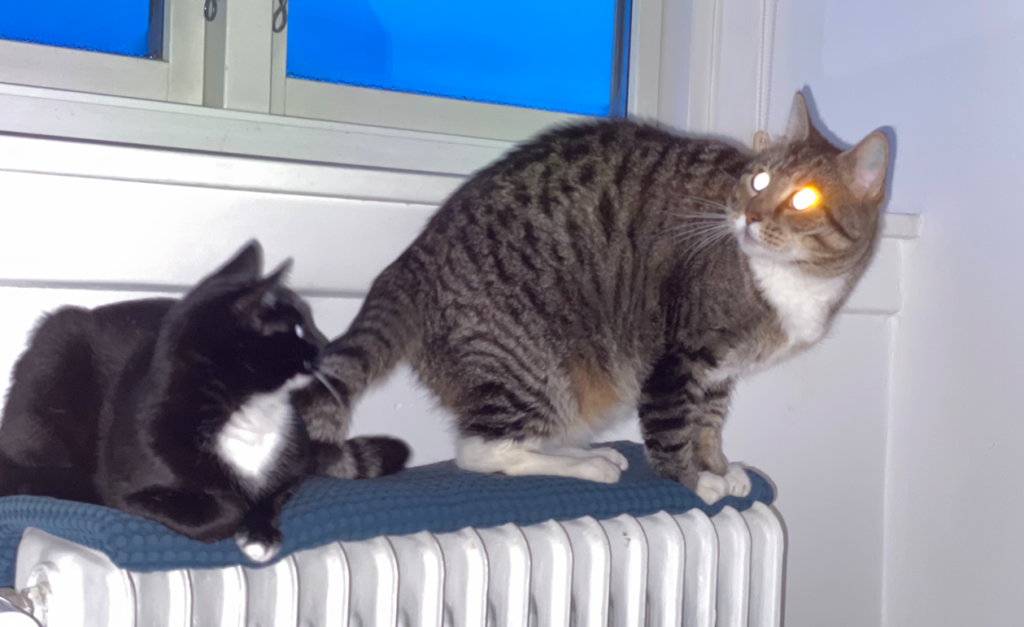Low light
When you shoot a scene where there is very little light, say at a party late at night or a dinner at a restaurant, then a flash may be the only way to get sufficient light to enable you to capture an image.
The human eye is like the aperture of your lens: in low light it opens up the pupils (aperture blades) to maximise the light intake. Unfortunately, the light that enters your eye is also reflected by the eye to a very large degree. So wide open pupils equals lots of light returned.

Pre-light
A way to mitigate this is so simple it’s almost complicated: if your camera before firing the flash gives a strong light to make the pupils contract, then you have minimized the problem! The only requirement is that the pre-light and the flash are fired right after each other. The so called “red eye reduction” is an option available with many point and shoot cameras.
So, is this a good way of solving the problem? Well, it certainly gives less red eyes, but you will also see that people are not unaffected by the strong pre-light and often look as if they are looking into the headlights of an oncoming car. Which is actually pretty close to what has happened! And it is not the most flattering look!
Secondly, a lot of post processing software (like Lightroom) offers standard solutions to remove red eyes that is both efficient and simple to use. So for these reasons, I do not use red eye reduction when I shoot with a flash.
